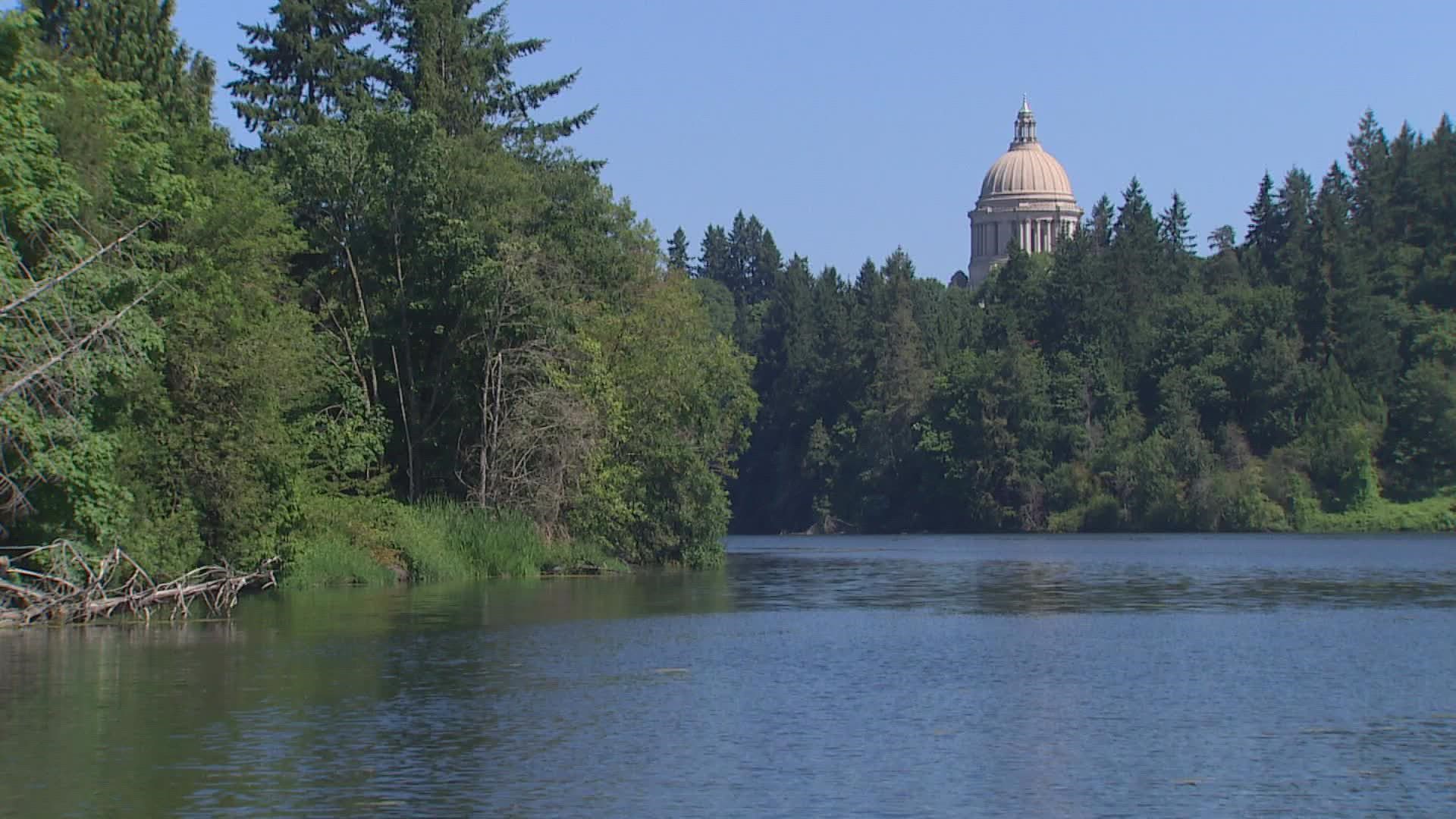OLYMPIA, Wash. — What was supposed to be a reflecting pond on the Washington State Capitol Campus in Olympia has turned into an ecological mess.
The artificial lake was closed to the public in 2009 after invasive species were discovered in the water that failed to meet state water quality standards.
After decades of research looking for a plan to restore and clean up the 260-acre waterway, the state has chosen to return the area to its more natural state: an estuary.
“Consistent with our history, but it will be managed in a way that is consistent also with today’s modern environment,” said Project Manager Tessa Gardner-Brown.
Gardner-Brown said the option selected by the state includes plans to remove enough sediment to fill an estimated 750 Olympic swimming pools and tearing down the dam built in 1949 to create the artificial lake.
She said allowing for natural tidal flows in the area where the Deschutes River meets Puget Sound will result in less sediment collection and cleaner water.
“It would create a diverse shoreline environment, diverse in ecology, diverse in visual perspective, introduce new boardwalks for community use, also manage the sediment that moves downstream once that dam is removed,” explained Gardner-Brown.
Plans include allowing public swimming and boat use again.
“It’s so exciting,” said Gardner-Brown. “It does set a clear path forward for restored use of this beautiful part of Olympia and the larger community.”
The plan was endorsed by the city of Olympia and the Squaxin Island Tribe.
The plans include replacing the existing dam and Fifth Avenue Bridge with a new bridge that will include bike lanes and pedestrian access.
All the work could take more than 13 years to complete, said Carrie Martin, environmental planner for the Washington Department of Enterprise Services.
Martin said cost estimates range from $137 million to $247 million. She hoped state, federal and grant funding would all pay for the work.
Doing the work now, Martin added, is the most cost-effective strategy.
“The environmental conditions will just keep getting worse, and the longer we wait to make the improvements, the costs will continue to escalate,” said Martin.

